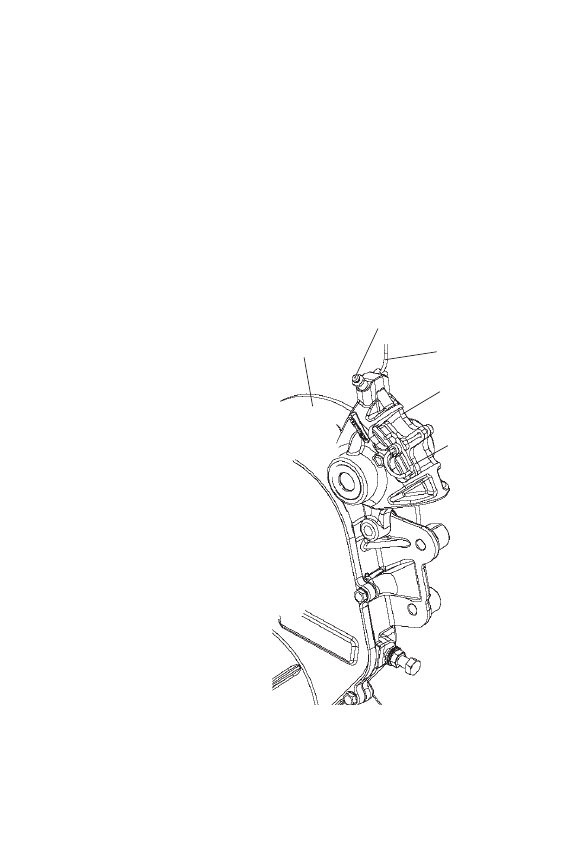Snowmobile Polaris Turbo IQ LXT (2014 year). Manual - part 29

119
MAINTENANCE
Brakes
Hydraulic Brake Inspection
Inspect the brake lever reserve before each use of the snowmobile. See
page 69.
Brake pads must be replaced when the brake pad material becomes thin-
ner than the backing plate, approximately 1/16” (1.5 mm). A kit is avail-
able for replacing brake pads. See your dealer.
WARNING! Brake failure during operation can result in serious injury or death.
Properly functioning brakes are vital to your safety. Be sure the brake pads do
not drag on the disc and that brake lever travel is not excessive. Always replace
brake pads when the brake pad material becomes thinner than the backing
plate, approximately 1/16” (1.5mm).
Brake Components
• Brake Disc
• Bleed Screw
• Brake Line
• Brake Caliper
• Brake Pad Material -
Replace when thickness is
less than 1/16” (1.5 mm).
Excessive Lever Travel
Hydraulic brakes are self-
adjusting, but if excessive
brake pad clearance develops
bring the snowmobile to an
authorized POLARIS dealer for
inspection and adjustment.
Brake Disc
Bleed Screw
Brake Pad
Material
Brake Line
Brake
Caliper